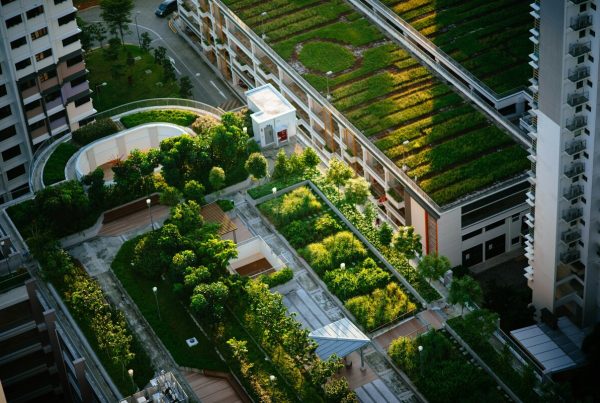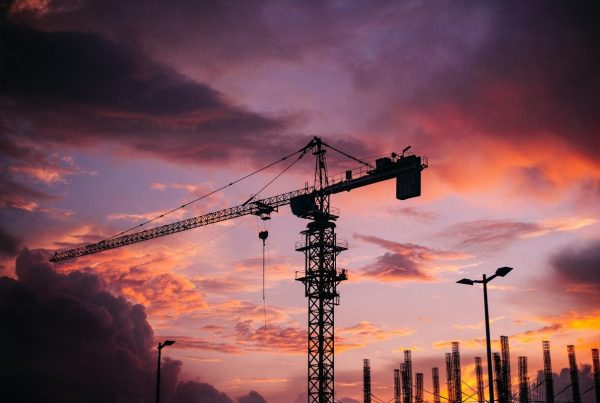As technology helps to transform the construction industry, it contributes to a more sustainable future for the built environment. As new software and devices introduce innovative possibilities in construction, an industry once considered to be unnecessarily hard on the environment and slow to innovate, is now adapting and evolving in the era of green building.
The following technologies are powering innovation that benefit construction companies as well as the environment, and in turn, people.
1. Artificial Intelligence (AI)Building Information Modeling
Artificial intelligence is one of the most important innovations to come to the construction industry. It opens new opportunities for optimization and innovation while elevating the capabilities of other technologies.
From design to security and site safety, there are limitless possibilities for AI in the construction industry, including sustainable construction initiatives. In fact, the AI construction market is slated for a 33.8% CAGR through 2026, indicating the booming adoption the technology is experiencing.
For example, AI can add more advanced tools to BIM software and even enable generative design. Generative design is an architectural design method that uses AI to create structures that either use minimum resources or fit technical requirements in unique ways – resulting in buildings that are more sustainable than conventionally designed buildings. Additionally, AI can optimize and monitor equipment and maintenance with the help of IoT sensors.
AI is even on the verge of powering autonomous construction vehicles, which would transform operations in the industry. Since construction companies need solutions to their labor shortage, self-driving vehicles could be an incredibly helpful innovation. In addition, since AI can optimize a vehicle’s operation so that it uses the minimum amount of energy possible, fuel consumption would be reduced and in turn, so would their carbon footprint.
2. Building information modeling (BIM)
This is a type of construction software that has recently become extremely popular. Not only does it simplify and streamline the design process, but also offers features that improve sustainability in construction.
Since BIM allows designers to get a detailed, whole-building view of projects and helps draw insights about a building’s design, such details enable construction teams to optimize a building’s design for sustainability.
For example, BIM might reveal that the design of a building’s HVAC system hampers the system’s energy efficiency, and in turn, the design team could redesign the system so that it would use less power, reducing the building’s carbon footprint. Similarly, building designers could experiment with different window and facade orientations to find one that best utilizes natural light and heat from sunlight, reducing energy use.
There are countless other ways that BIM can reveal and elevate opportunities for sustainable design. Increasing awareness of a building’s detailed anatomy opens the door to green building improvements.
3. 3D Printing
Construction-grade 3D printing is just beginning to become a mature technology but, as one of the most ambitious green construction innovations in recent history, it has the potential to completely revolutionize the industry. As the world’s first 3D-printed neighborhoods begin to crop up, the validity of this technology will be tested
One of the benefits of 3D printing a building is that is much faster than conventional construction methods and requires far fewer people. This reduces a project’s impact on the local environment and helps construction companies fulfill projects despite the construction industry’s labor shortage.
Additionally, the nature of additive manufacturing makes it more environmentally friendly than conventional construction since drastically less waste is generated in the construction process. As a 3D printer will only use as much material as it needs, construction projects are less-expensive and resource-intensive.
An added bonus is that electricity can power3D printers,, and it is even possible to power one using renewable energy, such as built-in solar panels. As the 3D printer replaces most of the large vehicles needed for conventional construction – ones which generate substantial amounts of carbon emissions – 3D-printed fabrication significantly reduces construction’s carbon footprint.
4. IoT Sensors
The internet of things (IoT) is enabling the development of technologies advantageous to sustainability, including advanced sensors for the construction industry. IoT sensors are helping construction companies save money on their vehicle fleets while also reducing their carbon footprint. By installing IoT sensors on construction vehicles, operators can track vehicle performance over time, revealing insights about downtime, idle time, and maintenance needs. These functions are extremely valuable, especially when used with fleet management software.
For example, the data from IoT sensors could track when vehicles have excessive idle time, and construction companies could improve vehicle operators’ behavior, saving fuel and reducing emissions.
Additionally, tracking vehicle usage and performance allows construction companies to pinpoint when vehicle use is inefficient. Through effective energy-monitoring software, construction companies can identify inefficient fuel consumption and even estimate long-term sustainable performance. This saves construction companies significant amounts of money on fuel over time and reduces their carbon footprint.
IoT sensors also enable predictive maintenance. Data collected by the sensors can indicate when a vehicle needs a tune-up, preemptively avoiding a breakdown. Construction companies can initiate smaller maintenance check-ups rather than waiting until a vehicle needs a large, expensive repair, saving time, money, and resources while extending the life of construction vehicles.
5. Renewable Energy
As global leaders and activists raise awareness about climate change, more clients will request sustainable construction practices on their projects and the installation of renewable energy sources.
In fact, renewable energy adoption increased 90% between 2000 and 2020, booming 42% between 2010 and 2020 alone and reaching an all-time high. Advances in renewable energy are changing client requests for new construction projects, as well as the way those projects are conducted. For example, solar panels are more efficient than they once were and are becoming much more common on roofs around the world.
It may not be long before electric construction vehicles hit the market, allowing construction companies to actively reduce carbon emissions from their daily operations.
Meanwhile, the demand for renewable energy is creating valuable job opportunities in construction, spurring the construction of solar and wind power plants all over the world.
Building the Construction Industry of Tomorrow
Technology is transforming the construction industry into a cutting-edge, sustainable, innovative one. From self-driving vehicles to 3D-printed buildings and solar-powered construction, these technologies are helping construction companies build the cities of tomorrow while protecting the planet.http://www.pexels.com/photo/two-electricians-standing-near-the-solar-panels-4254172/











